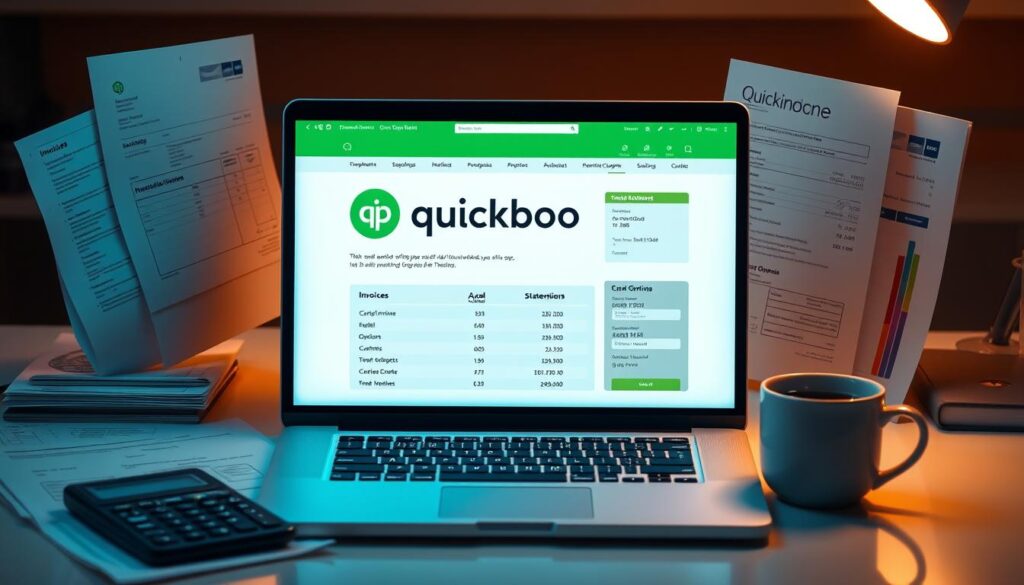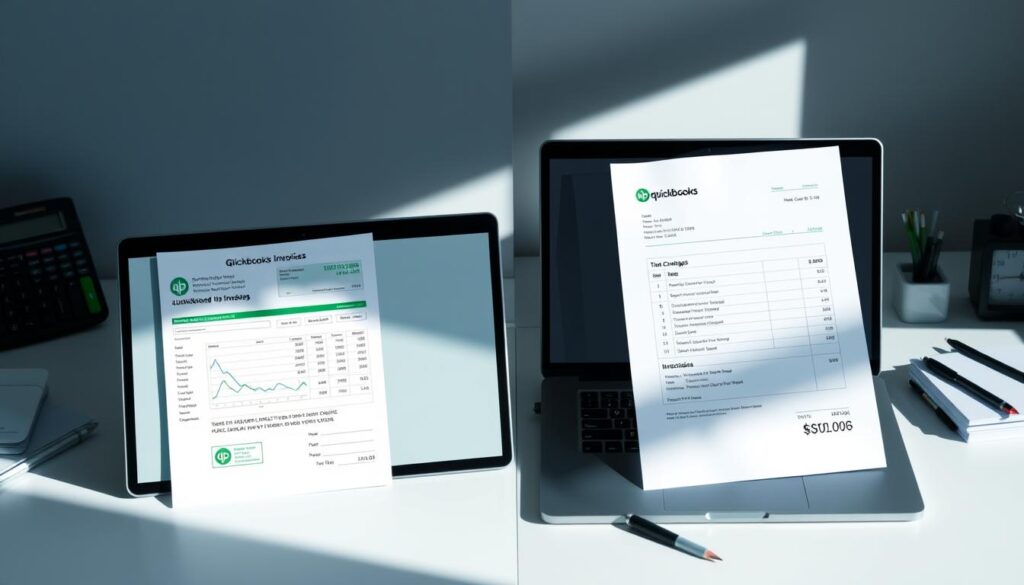Managing payments in business accounting can be tough and time-consuming. QuickBooks, a well-known accounting software, offers two main ways to collect payments: statements and individual invoices. It’s important to know the differences between these to make your billing process smoother and keep cash flowing well. This guide will explain the details of QuickBooks statements and invoices, helping you choose the best option for your business.

Key Takeaways
- Statements and invoices serve different purposes in QuickBooks.
- Invoices give detailed info on each transaction, while statements show account activity summaries.
- QuickBooks can accept payments through both statements and individual invoices, based on your business needs.
- Knowing the main differences between statements and invoices can help make your billing process better and improve cash flow.
- Figuring out what your business needs will help decide if statements or individual invoices are better for you.
Understanding QuickBooks Statements and Invoices: Key Differences
As a business owner, knowing the difference between QuickBooks statements and invoices is key. Both are used for billing, but they serve different purposes. Let’s explore the details to help you choose what’s best for your business.
What is a QuickBooks Statement?
A QuickBooks statement shows a customer’s account activity for a month. It includes all transactions, like invoices, payments, and credits. This document helps you see a customer’s financial status with your business, making it easier to manage accounts.
How QuickBooks Invoices Work
QuickBooks invoices are for specific goods or services. Each invoice lists what was provided, how much, and the total cost. They are sent when a transaction is made, asking for payment.
Statement vs Invoice: Main Distinctions
The main difference is in their purpose and what they show. Statements give a big picture of a customer’s account, while invoices focus on one transaction. Statements are monthly, but invoices can be sent for each transaction or at set times like weekly.
| QuickBooks Statements | QuickBooks Invoices |
|---|---|
| Comprehensive account summary | Individual billing documents |
| Issued monthly | Issued per transaction or at regular intervals |
| Tracks all account activity | Details specific goods or services provided |
| Facilitates account management | Serves as a request for payment |
Knowing the difference between QuickBooks statements and invoices helps you manage your billing better. It improves how you collect payments and keeps your financial records clear.

Can QuickBooks receive payment by statements rather than individual invoices
QuickBooks gives businesses a choice between statement payments and individual invoice payments. Each option has its own benefits. Knowing the differences can help improve your billing process.
Statement payments let customers pay one amount for all outstanding invoices. This makes managing cash flow easier and cuts down on paperwork. It’s especially good for businesses with recurring or subscription services.
Invoice payments, however, offer more control and detail. They’re great for businesses with complex billing needs. QuickBooks’ invoicing tools help track payments and balances closely. This makes it easier to follow up and collect payments.
FAQ
Can QuickBooks receive payment by statements rather than individual invoices?
Yes, QuickBooks can accept payments by statements instead of individual invoices. This makes billing easier and helps collect payments more efficiently.
What is the difference between a QuickBooks statement and an invoice?
A QuickBooks statement shows all outstanding invoices for a customer. An invoice is for one transaction or service. Statements give a clear view of a customer’s account, making payment tracking easier.
How can I set up statement-based payments in QuickBooks?
To set up statement-based payments, go to “Customers” and choose “Create Statements.” Customize the settings as you like. This will create a statement for customers to pay all outstanding invoices at once.
What are the benefits of using statement-based payments in QuickBooks?
Using statement-based payments in QuickBooks improves cash flow and reduces work. It also makes the billing process clearer for customers. This makes it easier for them to pay their balances.
Are there any limitations to using statement-based payments in QuickBooks?
Statement-based payments have many benefits but also some limits. For example, some customers might still want to pay individual invoices. This method might not work well for complex billing or recurring payments.
